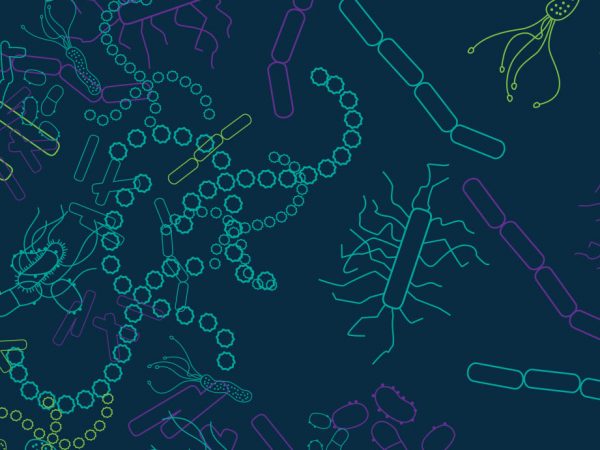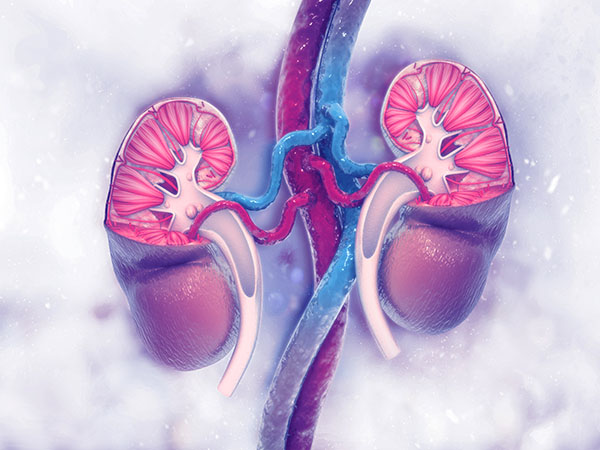AACR Virtual Annual Meeting I: Insights Gained from AACR Project GENIE
The unrestrained cellular proliferation that characterizes cancer largely arises due to genetic mutations, which can impede the regulatory mechanisms that control when and how often a cell divides. Genetic mutations may also influence how aggressive a cancer will be and how it will respond to various treatments. Therefore, understanding the genetics of a patient’s cancer is key to achieving the goal of precision oncology, which aims to improve clinical outcomes by tailoring treatments to each patient’s unique cancer.

In order to apply precision oncology more broadly, additional research is needed to identify the diverse mutations that exist across cancer types and, more importantly, understand how they may contribute to a cancer’s response to specific therapies. To this end, the AACR launched Project GENIE (for Genomics Evidence Neoplasia Information Exchange) in 2015.
Understanding how the broader research community is using the Project GENIE registry was the focus of the “Advancing Cancer Research Through an International Cancer Registry: AACR Project GENIE Use Cases” Minisymposium at the AACR Virtual Annual Meeting I. This session also featured studies from the AACR Project GENIE consortium investigating how cancer mutations may affect clinical outcomes.
What is Project GENIE?
As explained by session moderator Gregory Riely, MD, PhD, medical oncologist at Memorial Sloan Kettering Cancer Center and the Weill Cornell Medical College, Project GENIE is a publicly accessible international cancer registry of tumor genomics (somatic tumor DNA) and “phenomics” (tumor type, histology, patient demographics, and patient vital status).

“The ultimate goal of this effort is to improve clinical decision-making [through] linking clinical genotype to clinical outcomes,” said Riely.
To date, the Project GENIE database encompasses almost 80,000 tumors from 19 different cancer centers and includes data from both pediatric and adult patients. Data are made public 12 months after sequencing.
Using Project GENIE data to study a commonly mutated signaling pathway
Several studies presented during the session used the Project GENIE database to examine mutations of the mitogen-associated protein kinase (MAPK) pathway, which regulates cellular proliferation and is one of the most frequently mutated signaling pathways in cancer. MAPK signaling is initiated upon activation of the upstream epidermal growth factor receptor (EGFR), which is also commonly mutated in cancer. Several therapies are approved for the treatment of cancers with mutations in EGFR or in MAPK signaling proteins; however, responses to these therapies remain inconsistent. Additional information about these mutations and their impact on clinical outcomes is needed.
Characterizing non-V600 BRAF mutations
The first study of the session was presented by Gabi Tarcic, PhD, chief technology officer of Novellus, who examined previously uncharacterized mutations in BRAF, a signaling protein within the MAPK pathway. Tarcic noted that over 500 unique BRAF mutations have been identified, with mutations of the amino acid valine at position 600 (V600) accounting for the majority of BRAF mutations observed in patients’ cancers. Mutations at V600 result in enhanced BRAF kinase activity and increased cellular proliferation, thus promoting cancer growth. While cancers harboring V600 mutations have been widely studied and can be targeted by U.S. Food and Drug Administration-approved BRAF inhibitors, information about non-V600 mutations is limited, and there are no approved therapies targeting non-V600 BRAF mutations. Furthermore, cancers with non-V600 mutations do not respond to currently approved BRAF inhibitors.

In this study, Tarcic and colleagues used data from the Project GENIE database to identify and characterize non-V600 BRAF mutations. By analyzing data from 47,000 patients, they found distinct cancer-type distributions between V600 and non-V600 BRAF mutations. While V600 mutations were found predominantly in melanoma, thyroid cancer, and colorectal cancer, non-V600 mutations were more prevalent in non-small cell lung, breast, bladder, endometrial, and prostate cancers. Their analysis also revealed that non-V600 mutations were more likely to be associated with a higher number of co-occurring mutations. These observations hinted that the mutants could be associated with different functional properties, Tarcic explained.
Tarcic and colleagues then performed a high-throughput functional assay to determine the kinase activity of 135 novel non-V600 BRAF mutants, as BRAF kinase activity is associated with activation of MAPK signaling and cellular proliferation. The results from the functional assay showed that 58 of the 135 novel mutants had intermediate or higher kinase activity, according to Tarcic. He noted that the 58 mutants represented a significant proportion of the patient population (approximately 10 percent of all patients with non-V600 mutations in their cancer), thereby underscoring the need to understand non-V600 mutations and their impact on clinical outcome.
To understand how these mutations might impact sensitivity to BRAF inhibitors, Tarcic and colleagues repeated the functional assay in the presence of vemurafenib (Zelboraf) – which is approved for melanoma – or one of three investigational BRAF inhibitors. As expected, vemurafenib inhibited kinase activity of the V600E BRAF mutant, but did not affect the activity of the two non-V600 mutants that were tested. In contrast, all three investigational BRAF inhibitors were able to “potently inhibit” kinase activity of both non-V600 mutants and the V600E mutant, Tarcic reported.
“Given the vast heterogeneity of BRAF mutations and their differential drug sensitivity, we show that functional profiling can be instrumental in correct patient treatment … therefore advancing precision medicine,” Tarcic added.
Understanding resistance to tyrosine kinase inhibitors
The most common driver mutations for lung cancers are those in genes encoding EGFR and KRAS, a signaling protein in the MAPK pathway. Mutations in these genes can lead to unregulated cellular proliferation and cancer development. Cancers harboring EGFR mutations can be targeted by tyrosine kinase inhibitors, which have a relatively high response rate in patients with EGFR-mutated lung cancers. However, resistance to these inhibitors often develops, and the mechanisms underlying resistance remain unclear.

Another study presented during the session utilized Project GENIE to understand how resistance to tyrosine kinase inhibitors may develop. The study was presented by Giorgia Fogetti, PhD, a postdoctoral associate at the Yale School of Medicine. Fogetti and colleagues used the Project GENIE database to identify the mutations that frequently co-occurred with EGFR mutations in lung cancers. They found that the most common co-occurring mutations were in the tumor suppressor gene TP53. Other co-occurring mutations were found in RBM10, RB1, APC, SETD2, LKB1, KEAP1, and STK11, among others.
Fogetti and colleagues then performed experiments in mouse models of lung cancer to determine the potential impact of these co-occurring mutations on clinical outcomes. They found that deletion of Apc, Rbm10, or Rb1 in EGFR/p53-deleted mice resulted in larger tumors, suggesting that co-occurring mutations in these genes could contribute to tumor progression.
Since KRAS and EGFR are in the same signaling pathway, Fogetti expected that similar results would be observed in KRAS/p53-deleted mice. While deletion of Apc, Rbm10, and Rb1 did have a similar effect in these mice as in the EGFR/p53-deleted mice, deletion of the Setd2 and Lkb1 genes had opposite effects. Deletion of either Setd2 or Lkb1 led to larger tumors in the KRAS/p53-deleted mice but slightly smaller tumors in the EGFR/p53-deleted mice. These results demonstrate that the impact of a mutation on tumor growth can vary based on which other mutations are present in the tumor.
Consistent with the results from their mouse experiments, examination of the Project GENIE database revealed that LKB1 and SETD2 mutations were significantly more frequent in KRAS-mutated lung cancers than in EGFR-mutated lung cancers.
Fogetti and colleagues then investigated whether any of the co-occurring mutations could contribute to resistance to tyrosine kinase inhibitors. They found that in EGFR/p53-deleted mice treated with the tyrosine kinase inhibitor osimertinib (Tagrisso), deletion of Keap1 led to an increase in tumor size, suggesting that mutations in Keap1 could contribute to resistance to tyrosine kinase inhibitors in EGFR-mutated lung cancers. Consistent with these results, clinical data of patients treated with tyrosine kinase inhibitors showed that patients whose cancers had KEAP1 mutations had a shorter time to treatment failure.
“Overall, this work helps us to understand the impact of combinations of genetic alterations on tumor biology and also to uncover genotype-dependent effects on drug sensitivity,” said Fogetti.
A pan-cancer analysis of RAS mutations
As mentioned above, the MAPK signaling pathway is one of the most frequently mutated pathways in cancer. RAS, one of the proteins within the MAPK pathway, is mutated in approximately 30 percent of all human cancers, but the tissue-, context-, and co-mutation-specific prevalence of RAS mutations is not well understood.

In another study presented during the session, Valsamo Anagnastou, MD, PhD, assistant professor of medical oncology at the Johns Hopkins University School of Medicine, examined data from the Project GENIE database to better understand the prevalence of RAS mutations across multiple cancer types. The analysis included 637,420 RAS mutations (encompassing mutations in the KRAS, HRAS, and NRAS genes) from 63,490 tumors, representing 50 cancer types. A matched cohort of tumors without RAS mutations was included.
Anagnastou and colleagues found that the overall prevalence of RAS mutations varied across cancer types. For example, RAS mutations were observed in 77.7 percent of pancreatic cancers, but in only 1.1 percent of breast cancers.
By examining the tissue-type prevalence of specific KRAS mutations, the researchers found that certain mutations were more prevalent in certain cancer types. In non-small cell lung cancers, the G12C mutation (substitution of the amino acid glycine with cysteine at position 12) was most prevalent, while G12D (substitution of glycine with aspartic acid) was the predominant mutation in colorectal, pancreatic, and appendiceal cancers. The prevalence of HRAS and NRAS mutations were also found to be cancer type-specific, although the mutation frequency for HRAS was low overall.
Anagnastou and colleagues identified co-occurring mutations and found that these also varied across cancer types. The most common co-occurring mutations were in STK11, ATM, KEAP1, and RBM10 in non-small cell lung cancer; CDKN2A in pancreatic cancer; PIK3CA in colorectal cancer; and TERT in melanoma. In addition, mutations in certain genes were mutually exclusive with RAS mutations, meaning that mutations in these genes did not co-occur with RAS mutations. Examples of mutations that were mutually exclusive with RAS mutations were BRAF mutations in melanoma, thyroid cancer, and colorectal cancer, and EGFR and ERBB2 mutations in non-small cell lung cancer.
“This is the largest study to date with a diverse population providing information on RAS prevalence and co-mutation patterns,” said Anagnastou. “Our findings point to tissue-specific therapeutic vulnerabilities and provide insights for individualized therapies according to RAS mutations in a tissue-, context-, and co-mutation-specific manner.”
The future of Project GENIE
As highlighted by these three studies, the Project GENIE database can guide studies to understand the distribution and impact of tumor mutations. The untapped potential of the registry, however, lies in expanding the depth of the clinical data that are currently collected for each patient. To this end, a five-year collaborative research project, called the Biopharma Collaborative (BPC), was announced last fall to gather additional clinical data at scale.
“AACR Project GENIE provides a foundation for making advancements in precision oncology,” Riely said. AACR GENIE BPC is building on this foundation by curating clinical data to “connect genomics and patient outcomes as a function of treatment [at scale].”
“Hopefully, as we make it better and build more data into it, we can see more value [for] all of our colleagues,” he added.



